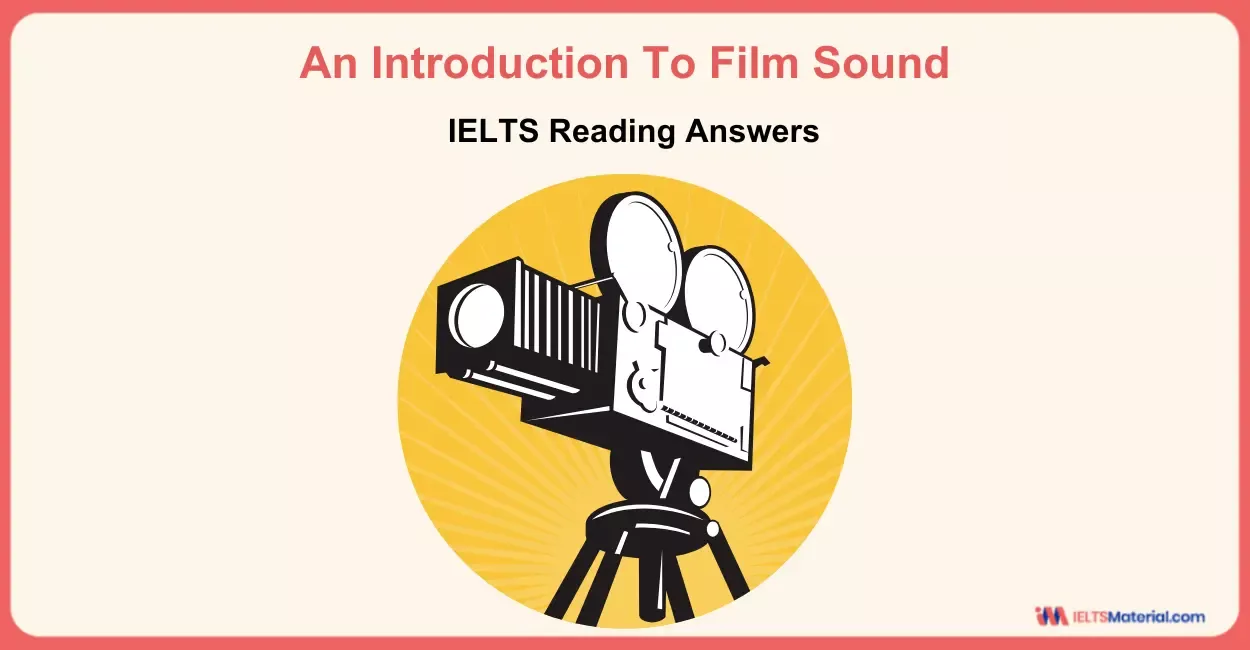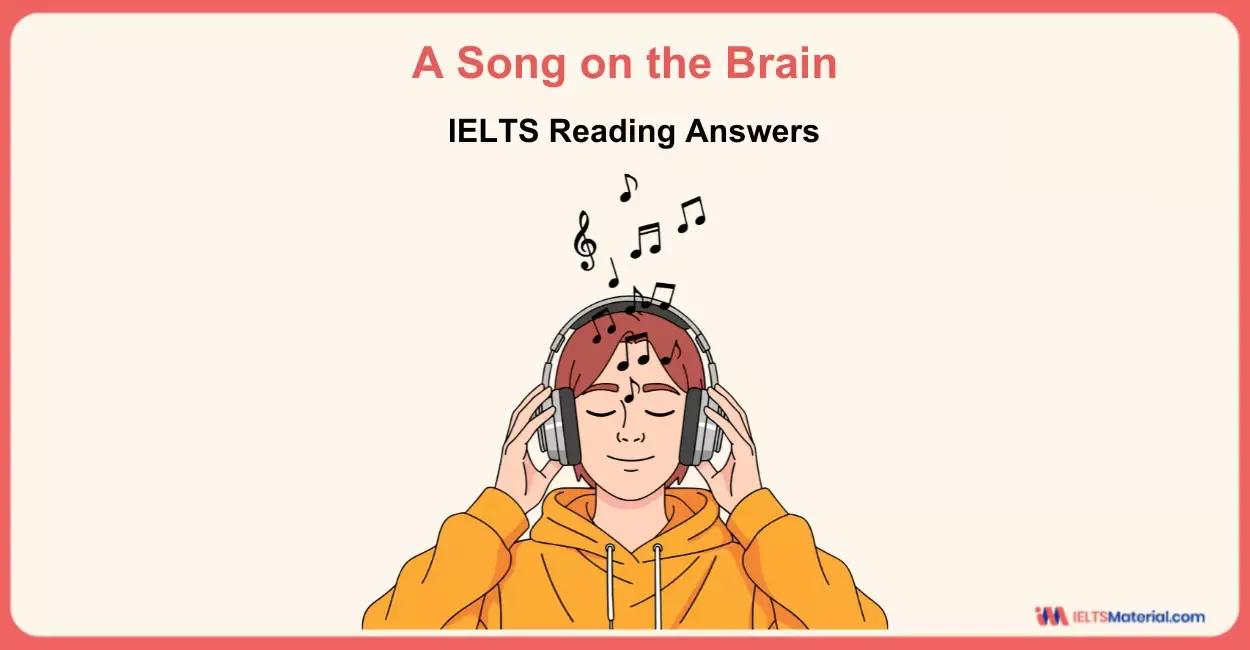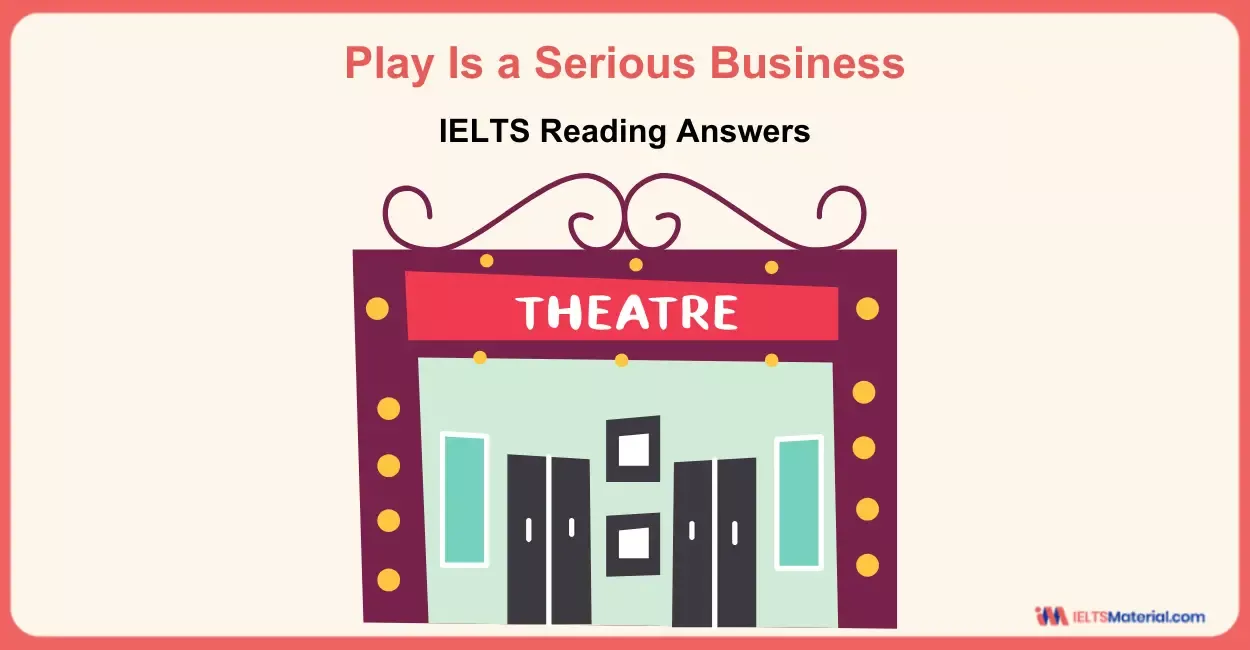How to Spot a Liar Reading Answers
14 min read
Updated On
-
Copy link
Take the How to Spot a Liar IELTS Reading Answers test and boost your reading skills for the IELTS exam. Also find the answer explanations to prepare for handling these IELTS reading question types for a band 9 in the actual exam.
Table of Contents

Limited-Time Offer : Access a FREE 10-Day IELTS Study Plan!
Many IELTS candidates lose marks in IELTS Reading for reasons that are totally avoidable, like not reading instructions carefully, getting stuck on one question, or misinterpreting the passage. The good news? These mistakes can be fixed by taking reading samples like How to Spot a Liar Reading Answers.
The reading passage, How to Spot a Liar Reading Answers, will help you develop these skills to achieve a high IELTS band score. Therefore, in this article, we will delve into the practice of the three different types of IELTS Reading questions, review answers for identifying areas of improvement and share some essential reading tips needed to excel in the exam.
Not sure how to answer IELTS Reading Multiple Choice Questions? Check out the video below for the latest tips and strategies!
Reading Passage for How to Spot a Liar Reading Answers
Go through the How to Spot a Liar IELTS Reading Answers passage given below and prepare yourself for the reading section with this IELTS Reading practice test.
You should spend about 20 minutes on Questions 1-13, which are based on the Reading Passage below.
How to Spot a Liar
However much we may abhor it, deception comes naturally to all living things. Birds do it by feigning injury to lead hungry predators away from nesting young. Spider crabs do it by disguise: adorning themselves with strips of kelp and other debris, they pretend to be something they are not – and so escape their enemies. Nature amply rewards successful deceivers by allowing them to survive long enough to mate and reproduce. So it may come as no surprise to learn that human beings- who, according to psychologist Gerald Johnson of the University of South California, or lied to about 200 times a day, roughly one untruth every 5 minutes- often deceive for exactly the same reasons: to save their own skins or to get something they can’t get by other means.
But knowing how to catch deceit can be just as important a survival skill as knowing how to tell a lie and get away with it. A person able to spot falsehood quickly is unlikely to be swindled by an unscrupulous business associate or hoodwinked by a devious spouse. Luckily, nature provides more than enough clues to trap dissemblers in their own tangled webs- if you know where to look. By closely observing facial expressions, body language and tone of voice, practically anyone can recognise the tell-tale signs of lying. Researchers are even programming computers – like those used on Lie Detector -to get at the truth by analysing the same physical cues available to the naked eye and ear. “With the proper training, many people can learn to reliably detect lies,” says Paul Ekman, professor of psychology at the University of California, San Francisco, who has spent the past 15 years studying the secret art of deception.
In order to know what kind of Lies work best, successful liars need to accurately assess other people’s emotional states. Ackman’s research shows that this same emotional intelligence is essential for good lie detectors, too. The emotional state to watch out for is stress, the conflict most liars feel between the truth and what they actually say and do.
Even high-tech lie detectors don’t detect lies as such; they merely detect the physical cues of emotions, which may or may not correspond to what the person being tested is saying. Polygraphs, for instance, measure respiration, heart rate and skin conductivity, which tend to increase when people are nervous – as they usually are when lying. Nervous people typically perspire, and the salts contained in perspiration conducts electricity. That’s why sudden leap in skin conductivity indicates nervousness -about getting caught, perhaps -which makes, in turn, suggest that someone is being economical with the truth. On the other hand, it might also mean that the lights in the television Studio are too hot- which is one reason polygraph tests are inadmissible in court. “Good lie detectors don’t rely on a single thing” says Ekma, but interpret clusters of verbal and non-verbal clues that suggest someone might be lying.”
The clues are written all over the face. Because the musculature of the face is directly connected to the areas of the brain that processes emotion, the countenance can be a window to the soul. Neurological studies even suggest that genuine emotions travel different pathways through the brain than insincere ones. If a patient paralyzed by stroke on one side of the face, for example, is asked to smile deliberately, only the mobile side of the mouth is raised. But tell that same person a funny joke, and the patient breaks into a full and spontaneous smile. Very few people -most notably, actors and politicians- are able to consciously control all of their facial expressions. Lies can often be caught when the liars true feelings briefly leak through the mask of deception. We don’t think before we feel, Ekman says. “Expressions tend to show up on the face before we’re even conscious of experiencing an emotion.”
One of the most difficult facial expressions to fake- or conceal, if it’s genuinely felt – is sadness. When someone is truly sad, the forehead wrinkles with grief and the inner corners of the eyebrows are pulled up. Fewer than 15% of the people Ekman tested were able to produce this eyebrow movement voluntarily. By contrast, the lowering of the eyebrows associated with an angry scowl can be replicated at will but almost everybody. “If someone claims they are sad and the inner corners of their eyebrows don’t go up, Ekmam says, the sadness is probably false.”
The smile, on the other hand, is one of the easiest facial expressions to counterfeit. It takes just two muscles -the zygomaticus major muscles that extend from the cheekbones to the corners of the lips- to produce a grin. But there’s a catch. A genuine smile affects not only the corners of the lips but also the orbicularis oculi, the muscle around the eye that produces the distinctive “crow’s feet” associated with people who laugh a lot. A counterfeit grin can be unmasked if the corners of the lips go up, the eyes crinkle, but the inner corners of the eyebrows are not lowered, a movement controlled by the orbicularis oculi that is difficult to fake. The absence of lowered eyebrows is one reason why the smile looks so strained and stiff.
Download the How to Spot a Liar Reading Answers PDF, complete with questions for future practice!
Questions for How to Spot a Liar Reading Answers
How to Spot a Liar IELTS Reading Answers contains 13 questions, demonstrating three IELTS Reading question types. They are:
- IELTS Reading Yes/No/Not Given (Q. 1-5)
- IELTS Reading Multiple Choice Questions (Q. 6-9)
- IELTS Reading Matching Features (Q. 10-13)
Questions 1-5
Do the following statements agree with the claims of the writer in Reading Passage?
In boxes 1-5 on your answer sheet, write
YES if the statement agrees with the information
NO if the statement contradicts the information
NOT GIVEN if there is no information on this
1 All living animals can lie.
2 Some people tell lies for self-preservation.
3 Scientists have used computers to analyze which part of the brain is responsible for telling lies.
4 Lying as a survival skill is more important than detecting a lie.
5 To be a good liar, one has to understand other people’s emotions.
Questions 6-9
Choose the correct letter A, B, C or D.
Write your answers in boxes 6-9.
6 How does the lie detector work?
A It detects whether one’s emotional state is stable.
B It detects one’s brain activity level.
C It detects body behavior during one’s verbal response.
D It analyses one’s verbal response word by word.
7 Lie detectors can’t be used as evidence in a court of law because
A Lights often cause lie detectors to malfunction.
B They are based on too many verbal and non-verbal clues.
C Polygraph tests are often inaccurate.
D There may be many causes of certain body behavior.
8 Why does the author mention the paralyzed patients?
A To demonstrate how a paralyzed patient smiles
B To show the relation between true emotions and body behavior
C To examine how they were paralyzed
D To show the importance of happiness from recovery
9 The author uses politicians to exemplify that they can
A Have emotions.
B Imitate actors.
C Detect other people’s lives.
D Mask their true feelings.
Questions 10-13
Classify the following facial traits as referring to
A sadness
B anger
C happiness
10 Inner corners of eyebrows raised
11 The whole eyebrows lowered
12 Lines formed around
13 Lines form above eyebrows
Set a timer and complete these questions within the allotted time!
Want to know more about how to solve the questions?
How to Spot a Liar IELTS Reading Answers with Location and Explanation
Now, see how your answers to the How to Spot a Liar IELTS Reading questions compare to the answer key below. Make sure to create customized strategies from the feedback from the practice of this IELTS Reading recent actual test.
1 Answer: YES
Question Type: Yes/No/Not Given Questions
Answer location: Paragraph A, line 1
Answer explanation: The opening line of paragraph A mentions that “however much we may abhor it, deception comes naturally to all living things. Birds do it by feigning injury to lead hungry predators away from nesting young.” The term deception means making someone believe that is not true. Hence, we can say that deception (lying) comes naturally to animals.
2 Answer: YES
Question Type: Yes/No/Not Given Questions
Answer location: Paragraph A, last line
Answer explanation: In the reference paragraph, you can point out that “so it may come as no surprise to learn that human beings- who, according to psychologist Gerald Johnson of the University of South California, or lied to about 200 times a day, roughly one untruth every 5 minutes- often deceive for exactly the same reasons: to save their own skins or to get something they can’t get by other means.” From the term “people try to save their own skin” we can infer that some people tell lies for self-preservation.
3 Answer: NOT GIVEN
Question Type: Yes/No/Not Given Questions
Answer location: Paragraph B, line 5
Answer explanation: In the reference paragraph you can find the information that “researchers are even programming computers – like those used on Lie Detector -to get at the truth by analyzing the same physical cues available to the naked eye and ear.” However, none of the passages provides the information that scientists have used computers to analyze which part of the brain is responsible for telling lies.
4 Answer: NO
Question Type: Yes/No/Not Given Questions
Answer location: Paragraph B, line 1
Answer explanation: Few lines in the said paragraph discuss that “but knowing how to catch deceit can be just as important a survival skill as knowing how to tell a lie and get away with it.” Hence, according to the author catching (detecting), a lie is as important as telling a lie.
5 Answer: YES
Question Type: Yes/No/Not Given Questions
Answer location: Paragraph C, line 1
Answer explanation: If you read thoroughly, a line in the said paragraph discusses that “in order to know what kind of Lies work best, successful liars need to accurately assess other people’s emotional states.” Hence, to be a successful (good) liar, one has to understand (accurately assess) other people’s emotions.
6 Answer: C
Question Type: Multiple Choice Questions
Answer location: Paragraph D, line 1
Answer explanation: A line in the said paragraph states that “even high-tech lie detectors don’t detect lies as such; they merely detect the physical cues of emotions, which may or may not correspond to what the person being tested is saying.” Hence, we can deduce that the lie detector machine detects physical cues of emotions (ones corresponding to verbal response) such as body language and tone of voice.
7 Answer: D
Question Type: Multiple Choice Questions
Answer location: Paragraph D, 2nd last line
Answer explanation: A line in the given paragraph suggests that “on the other hand, it might also mean that the lights in the television. Studio are too hot- which is one reason polygraph tests are inadmissible in court.” Lie detectors can’t be used as evidence in a court of law because studio lights are too hot which might mislead results.
8 Answer: B
Question Type: Multiple Choice Questions
Answer location: Paragraph E, line 4 and 6
Answer explanation: The answer is clearly mentioned in the said paragraph and line. You must note the paraphrasing here. In the passage, it is said that “if a patient paralyzed by stroke on one side of the face, for example, is asked to smile deliberately, only the mobile side of the mouth is raised.“ Here, the author mentions paralyzed patients to show the relation between true emotions and body behaviors. When paralyzed patients smile deliberately only the mobile side of the mouth is raised. However, when told a joke he/she breaks into full laughter. This shows how body behavior is connected with true emotions.
9 Answer: D
Question Type: Multiple Choice Questions
Answer location: Paragraph E, line 5
Answer explanation: Paragraph E suggests that “very few people -most notably, actors and politicians- are able to consciously control all of their facial expressions.” Hence, according to the author politicians can consciously control their facial expressions (mask their true feelings).
10 Answer: A
Question Type: Matching Features
Answer location: Paragraph F, line 1
Answer explanation: Paragraph F puts forward the information that “one of the most difficult facial expressions to fake- or conceal, if it’s genuinely felt – is sadness. When someone is truly sad, the forehead wrinkles with grief, and the inner corners of the eyebrows are pulled up.” According to the author, the facial expression of sadness is: forehead wrinkles with grief, and the inner corners of the eyebrows are pulled up.
11 Answer: B
Question Type: Matching Features
Answer location: Paragraph F, line 4
Answer explanation: You can note the paraphrasing here. In the passage, it states that “by contrast, the lowering of the eyebrows associated with an angry scowl can be replicated at will” Here, it implies that the facial expression of lowering of the eyebrows associated with anger.
12 Answer: C
Question Type: Matching Features
Answer location: Paragraph G, line 2
Answer explanation: If you read thoroughly, there’s a line in the said paragraph that describes “but there’s a catch. A genuine smile affects not only the corners of the lips but also the orbicularis oculi, the muscle around the eye that produces the distinctive “crow’s feet” associated with people who laugh a lot.” Here, the muscle around the eye (lines around the eyes) infers happiness.
13 Answer: A
Question Type: Matching Features
Answer location: Paragraph F, last line
Answer explanation: The last line of paragraph F suggests that “if someone claims they are sad and the inner corners of their eyebrows don’t go up, Ekmam says, the sadness is probably false.” Here, the author claims that it is commonly believed that if lines on the eyebrows don’t go it means the person is sad.
Study the IELTS Reading Test Guide on how to master the Academic Reading Practise Tests and achieve a high band score in the module!
Tips for Answering the Question Types in How to Spot a Liar Reading Answers
Let’s have a look at some specific IELTS Reading tips and techniques to increase your reading speed and solve each question type given in How to Spot a Liar IELTS Reading Answers.
Yes/No/Not Given (Questions 1–5)
- Look for opinion markers like ‘believes’, ‘argues,’ ‘claims’, ‘according to’, ‘suggests’, ‘thinks. These indicate the writer (or another person) is expressing an opinion, not stating a fact.
- Choose YES, when the writer clearly agrees with the statement. The same idea is directly stated or strongly implied.
- Choose NO when the statement contradicts the writer's opinion. Look for opposite meanings or disagreements. Words like ‘however,’ ‘but’, or ‘in contrast’ often introduce contradictions.
- Choose NOT GIVEN, when the topic might be mentioned, but the writer's opinion about it is missing. Therefore, even if your logic says it should be true, if it’s not in the text, the answer is NOT GIVEN.
- Don’t confuse other people’s opinions with the writer’s – IELTS often presents outside views to distract you. Make sure the statement refers to what the author believes.
- Eliminate trap words – Be cautious with strong words like ‘all,’ ‘always’, ‘never’, ‘completely’. They are often too extreme compared to the actual passage.
Multiple Choice Questions (MCQs) (Questions 6–9)
- Read the question first, then scan the passage for keywords from the question and options.
- Underline or highlight keywords in both the question and options before reading. Look for synonyms or paraphrases in the text as IELTS rarely repeat exact wording.
- Read all 4 options carefully – More than one may seem correct, but only one fully fits the question based on the text.
- Use process of elimination – Eliminate options that are too general or too specific, factually wrong based on the passage or not mentioned at all. Remember it is a test of comprehension not your knowledge on a particular topic.
- Don’t assume based on logic or real-world knowledge – The correct answer must be directly supported by the passage only. Do not assume anything.
- Watch for distractors – Some options will include keywords from the text but twist their meaning.
Matching Features (Questions 10–13)
- Read questions and underline or circle keywords. This will help you find out where you would have to read and find later. Also, focus on how often every detail or name is appearing in the passage.
- Scan the passage and look for information given in the features and questions.
- Skim through the areas that are surrounded by keywords and features in the passage.
- Don’t get confused in case the text has synonyms of the information that is originally present in the question.
- Keep in mind that answers will not be in an order as questions.
To conclude, we can say that IELTS Reading can be challenging. However, with proper preparation, common errors can be avoided. Additionally, expanding IELTS vocabulary, practicing different question types like the ones in How to Spot a Liar IELTS Reading Answers, and managing time efficiently are essential steps toward improvement.
Check More IELTS Reading Answers
- IELTS Reading Practice Test 05 with Answers - Global Warming, What is a Dinosaur?, Doesn't that Sound Terribly Yellow to You?
- Keep Taking The Tablets Answers
- The Origins Of Laughter Answers
- Bringing Cinnamon To Europe Answers
- The History Of Salt Answers
- Music And The Emotions Answers
- The Great Australian Fence Answers
- The Little Ice Age Reading Answers
Practice IELTS Reading based on question types

Start Preparing for IELTS: Get Your 10-Day Study Plan Today!
Explore other Reading Practice Tests

Kasturika Samanta

Nehasri Ravishenbagam

Nehasri Ravishenbagam

Kasturika Samanta
Recent Articles

Nehasri Ravishenbagam

Haniya Yashfeen

Haniya Yashfeen

Haniya Yashfeen




Post your Comments